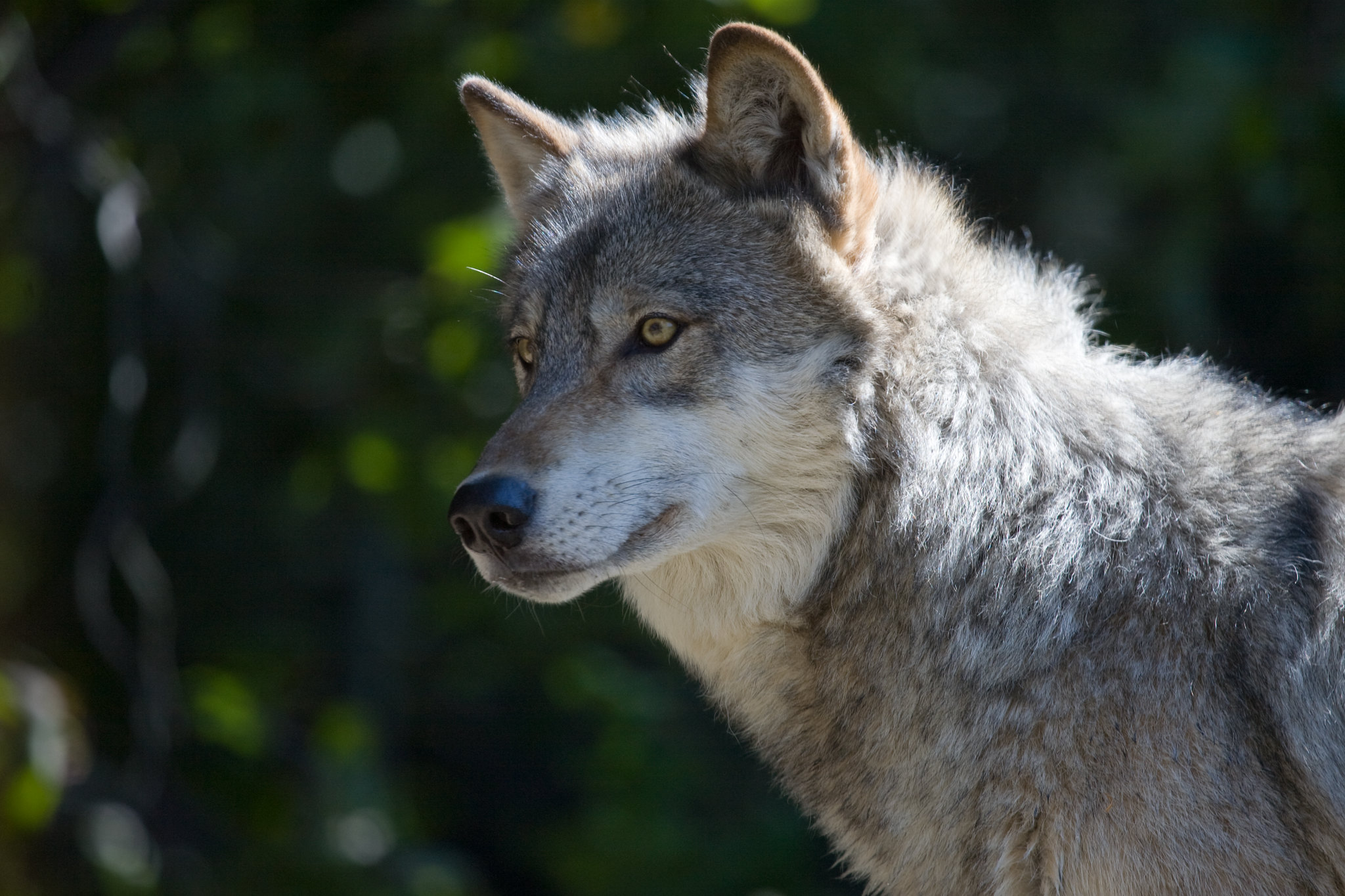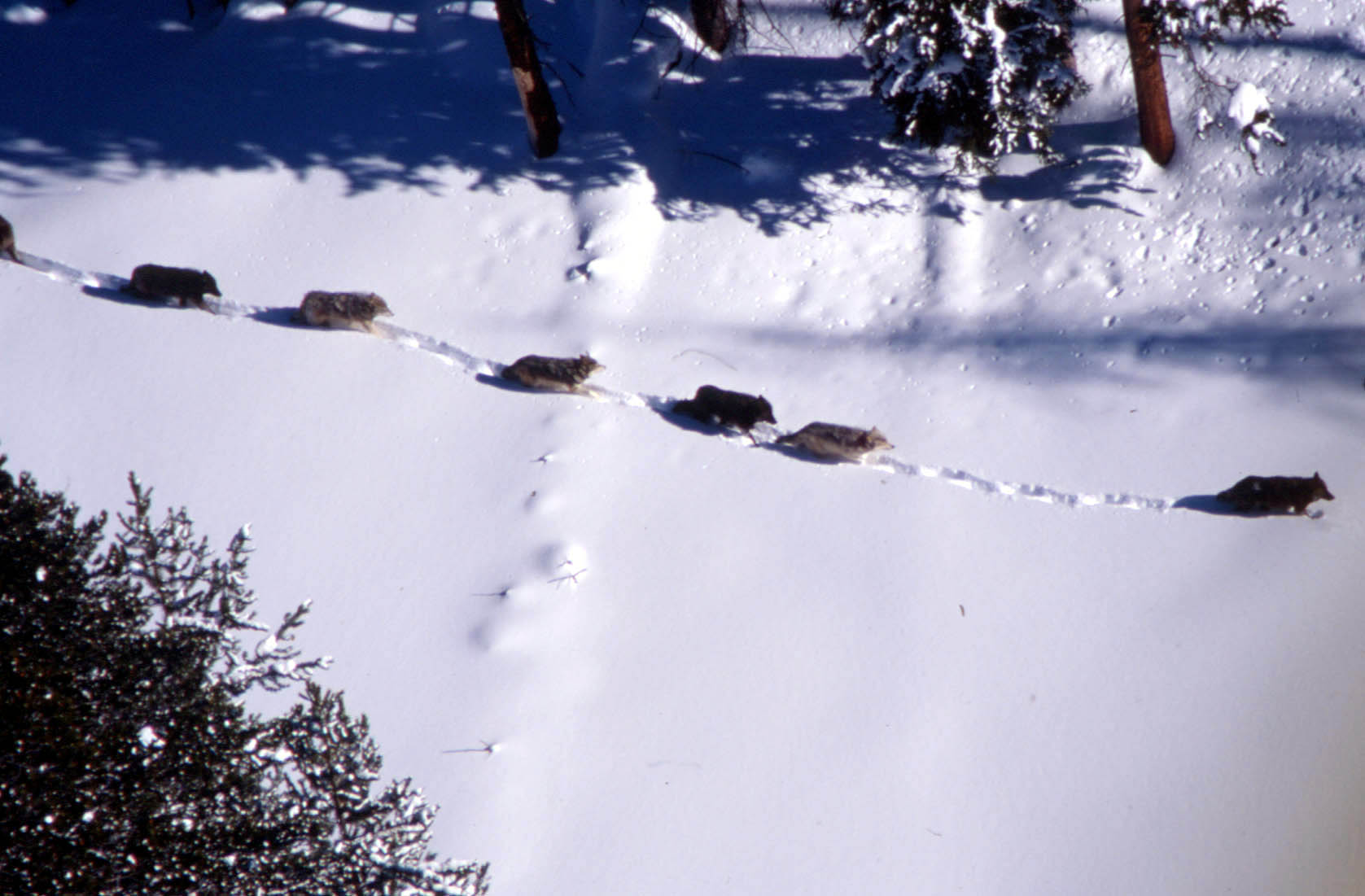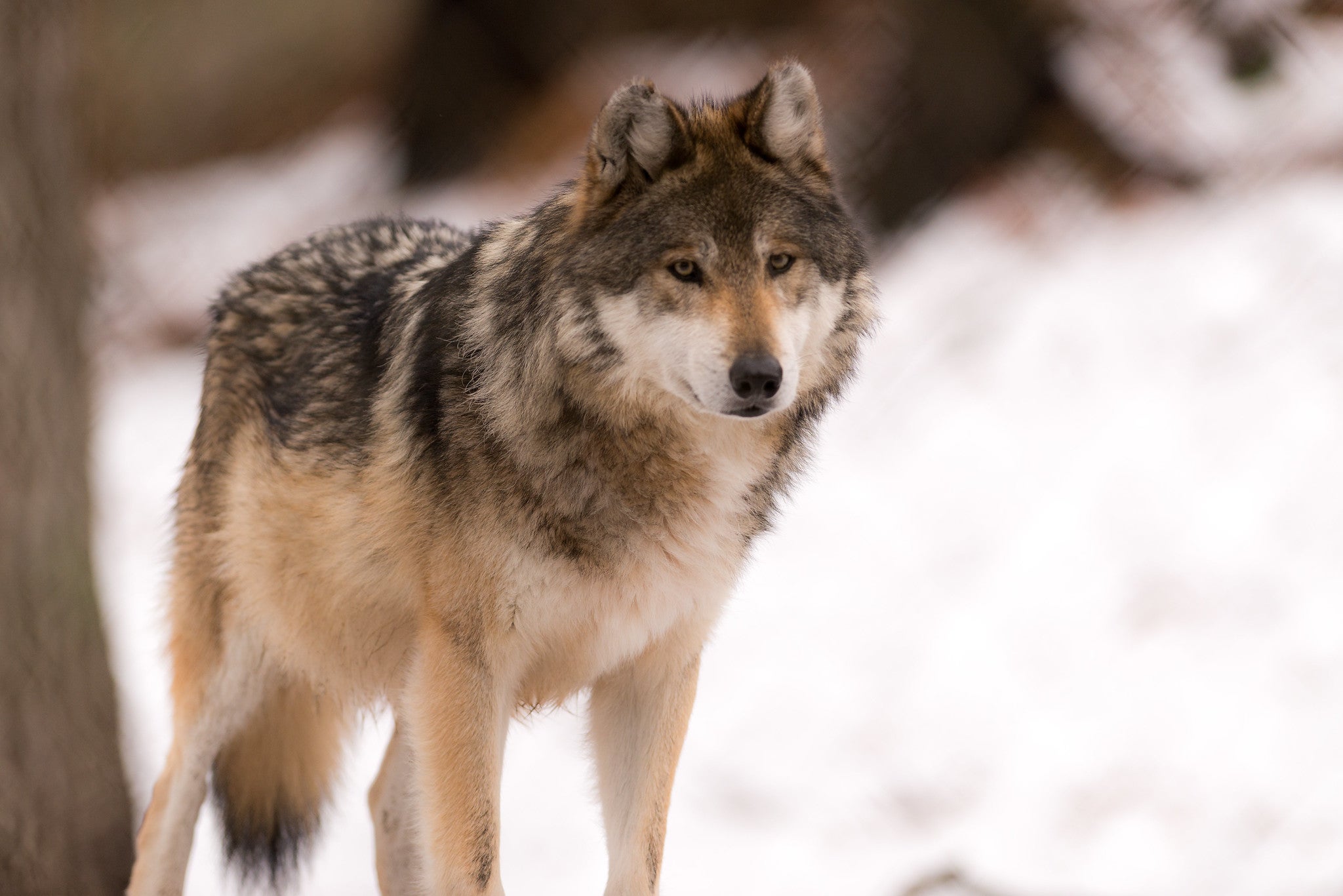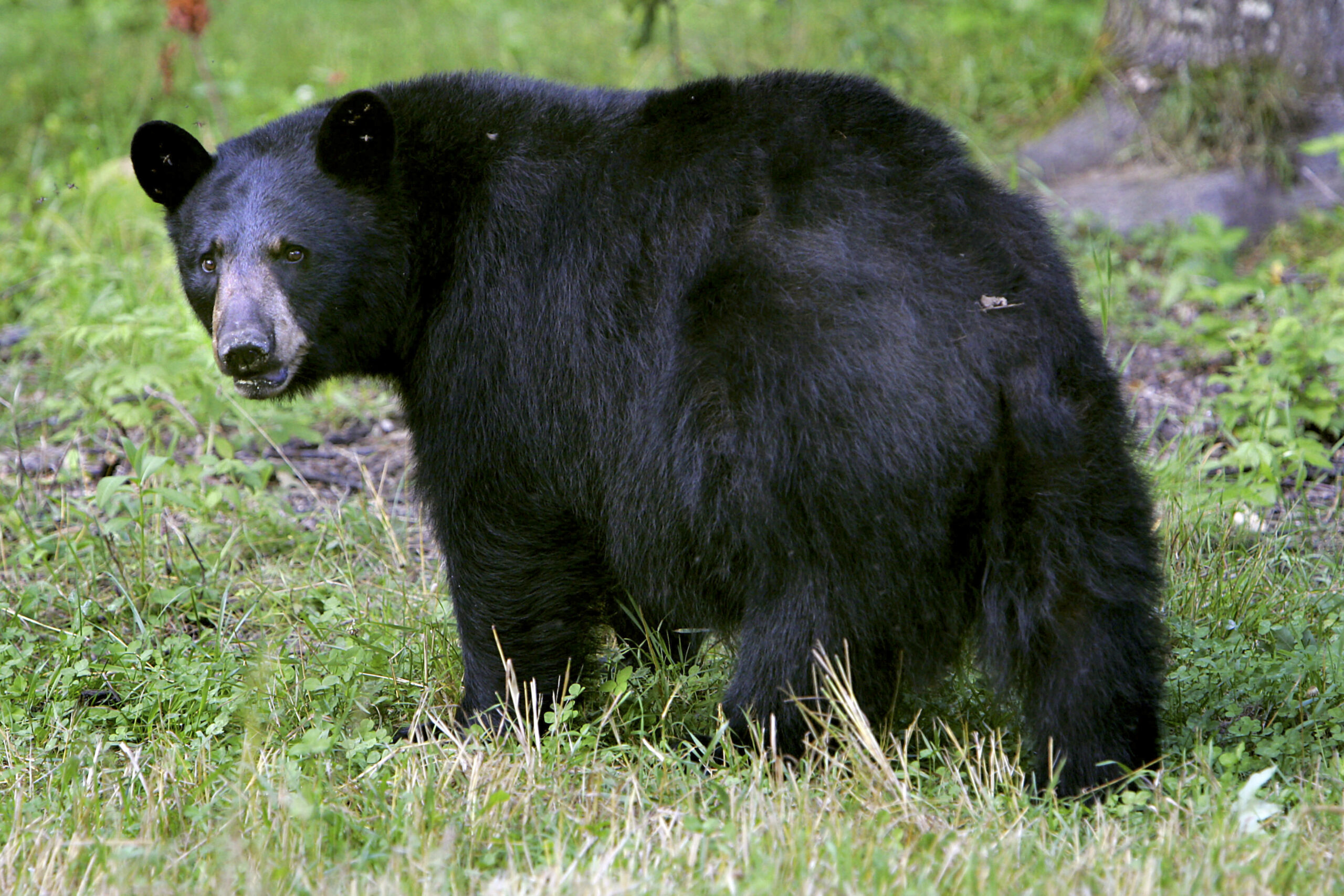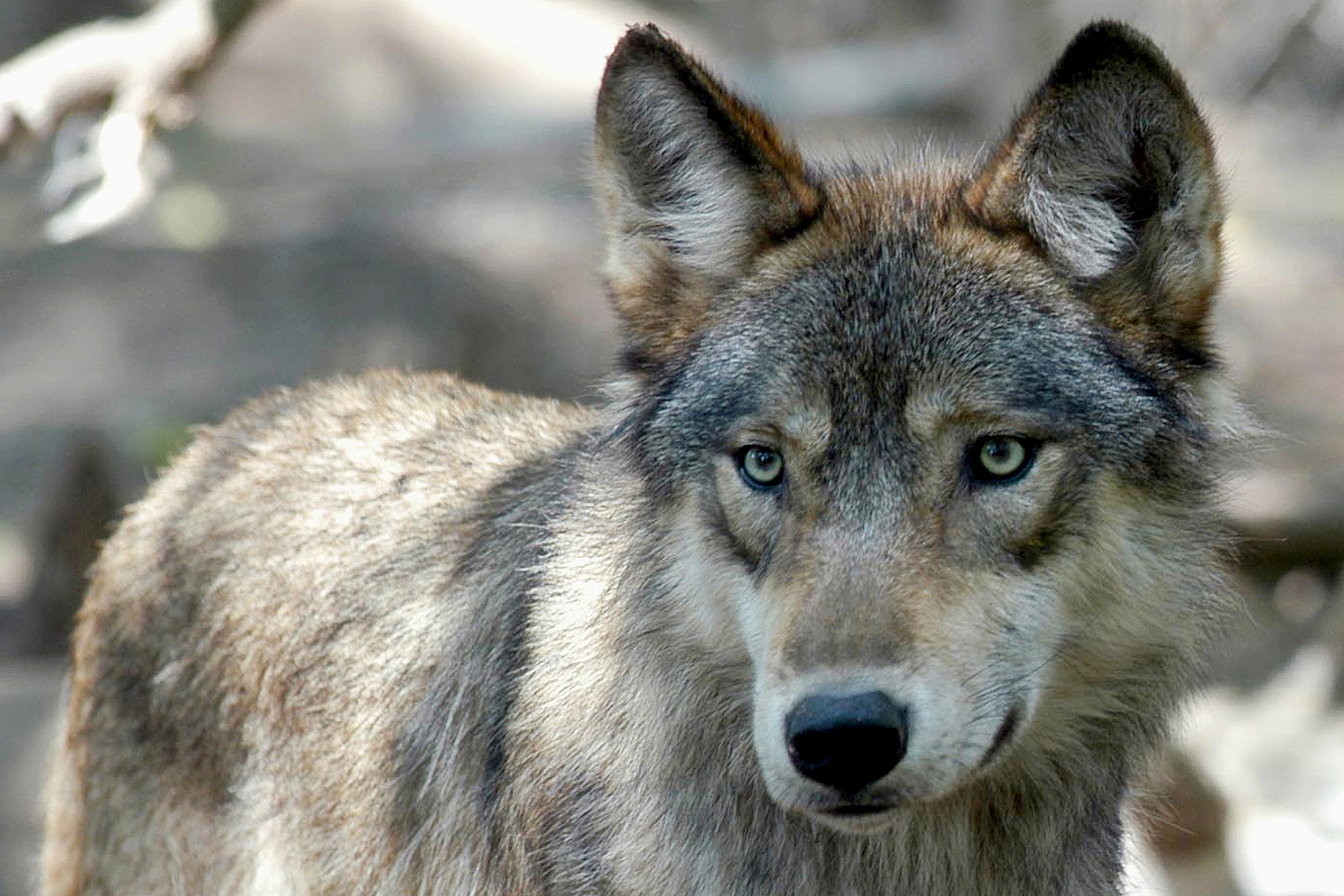No one is entirely pleased with the state’s proposed changes to wolf harvest regulations as the state prepares to finalize its first major update to its wolf management plan in decades.
The Wisconsin Department of Natural Resources is proposing a rule that incorporates recommendations from the agency’s contested draft wolf management plan. It’s the first major rewrite of the plan since it was written in 1999.
That plan set a management goal of 350 wolves in Wisconsin at a time when the state had roughly 250 wolves. Since then, the population has grown to nearly 1,000 wolves and appears to be stabilizing, according to the DNR.
Stay informed on the latest news
Sign up for WPR’s email newsletter.
The DNR’s proposed changes to harvest regulations drew mixed reaction from tribal, hunting, wildlife and other groups during a public hearing on Tuesday. The new rule would include protections for wolf dens that would make it illegal to harass or destroy dens. It would also require hunters to report wolf kills faster. That means kills would have to be reported within 8 hours instead of by 5 p.m. the next day.
“Which will allow us to (obtain) more information quicker about when wolves have been harvested, so we can make decisions about closing wolf zones once the quotas have been met,” Scott Karel, the DNR’s wildlife regulation policy specialist, said.
The agency has said the registration time prevented them from getting an accurate number of wolves killed during the 2021 wolf hunt. In February that year, hunters killed 218 wolves in under three days, consuming their share and Ojibwe tribes’ portion of a 200-wolf quota. A judge restored federal protections for the animal last year.
The DNR’s proposed changes to harvest regulations would also ensure dog training occurs during the wolf season, whereas training to track wolves was previously allowed year-round when they’re not under federal protection. Farmers who own livestock would receive more reimbursement for animals killed by wolves under the rule. And, the regulation includes updates to harvest zone boundaries and issuing tags for specific zones.
Since 2012, the agency has had an emergency rule in place for harvest regulations after the state mandated a wolf hunt following their delisting as an endangered species. Work on a permanent rule was scrapped in 2014 after a federal judge restored federal protections for wolves.
Comments on Tuesday addressed not only the proposed harvest regulations, but the agency’s plan. Chris Vaughn, Wisconsin State Director for Hunter Nation, said the organization opposes the wolf management plan because it lacks a set population goal. The group also opposes the proposed buffer zones around reservations of Wisconsin’s Ojibwe tribes, saying it adversely affects private property rights. And, Vaughn said the plan fails to set a quota for harvesting wolves in order to manage the species.
“Hunter Nation urges the department to confirm, as stated clearly in the 1999 plan, the wolf population goal in Wisconsin at 350 Wolves,” Vaughn said. “Based on that goal, even using the lowest possible total population count, Wisconsin has a surplus of 462 wolves in the state. Therefore, Hunter Nation recommends a harvest quota of 400 to 450 Wolves once a federal delisting occurs.”
The Great Lakes Indian Fish and Wildlife Commission represents tribes from Wisconsin, Michigan and Minnesota. Jason Schlender, the group’s executive administrator and chair of its Voigt Inter-Tribal Task Force, said the Anishinaabe people view ma’iingan, or wolves, as a brother, saying their fates are intertwined.
He said their member tribes continue to oppose recreational hunting of wolves despite Wisconsin law that mandates a hunt when the animal is delisted. Even so, he said the task force supports the rule’s proposal for faster registration of harvests. He added the protections for wolf dens and buffer zones around reservations are critical for protecting the state’s population.
Schlender also said the ecological importance of wolves should be the primary consideration in setting quotas, adding wolves killed for attacking livestock or dogs should be part of the quota for state-licensed hunters.
“The proposed rule retains the language exempting depredation kills from the harvest quota. This language should be taken out of the proposed rule, and the depredations should be counted against the state’s share of the quota,” Schlender said.
Speaking on behalf of the Wisconsin Wildlife Federation, the group’s former executive director George Meyer said criteria for setting quotas for the tribes’ share should consider past harvests by their members under the rule.
“Because that plays a major factor in whether (the) department would actually be able to regulate the population of wolves rather than, even if you meet the state quota, (you) still have a growth in population,” Meyer said.
Adrian Wydeven, co-chair of the wildlife working group for Wisconsin’s Green Fire, said the agency’s plan is a science-based and culturally sensitive approach to wolf management. He urged changes to language defining reservation wolves under the rule, and Wydeven advised against night hunting of wolves due to safety concerns and losing wolves that have been shot.
Wydeven, a former DNR biologist who was in charge of the 1999 wolf plan, said the state had a much lower population when that plan was developed.
“Green Fire opposes returning to a 350 management goal,” Wydeven said. “We feel the department’s current effort at managing without numeric goals and focusing on ecological benefits is much more beneficial for the wolf population.”
The Humane Society of the United States supports rule provisions that attempt to avoid a repeat of the 2021 wolf hunt, said Megan Nicholson, Wisconsin State Director. Nicholson said limiting dog training to the wolf season is a step forward, but she argued the practice amounts to state-sanctioned dogfighting.
“We recognize the state law mandates wolf hunting using dogs. Until that misguided law is changed, the DNR should at least eliminate any hound training season or, at a bare minimum, include additional restrictions on those training seasons,” Nicholson said.
However, dog trainer and bear hunter John Fetzer said the rule should allow at least three to four weeks for dog training prior to any wolf hunt.
“If the season is five to seven days, training would overlap harvesting and does not give the dog owners enough time for training,” Fetzer said.
Other wildlife and animal protection groups declined to participate in Tuesday’s hearing, arguing that the DNR’s process has not been transparent or inclusive. Animal Wellness Action, Project Coyote, and Friends of the Wisconsin Wolf and Wildlife are among groups who argue the DNR has prioritized desires of special interest groups over the public.
“They do need to set the permanent rules, but those need to be backed by sound science and policy and the public comments,” Melissa Smith, executive director of Friends of the Wisconsin Wolf and Wildlife. “They didn’t do that.”
She also questioned changes to the draft wolf management plan that seek to maintain between 800 and 1,200 wolves in Wisconsin after the DNR’s initial version nixed a population goal for the species.
Public comment on the wolf harvest rule will be accepted through Friday, Sept. 15. The DNR plans to bring the changes to wolf harvest regulations and its management plan before the Natural Resources Board at its October meeting.
Wisconsin Public Radio, © Copyright 2025, Board of Regents of the University of Wisconsin System and Wisconsin Educational Communications Board.

